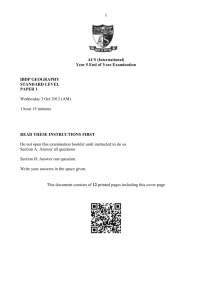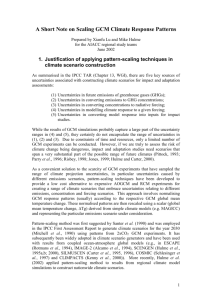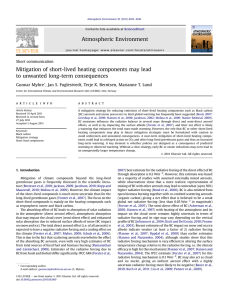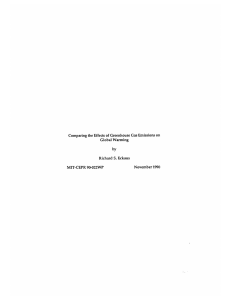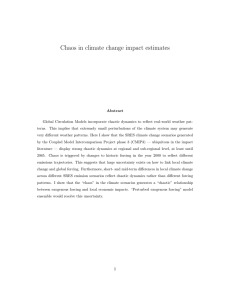Abstract - Choose Climate
advertisement
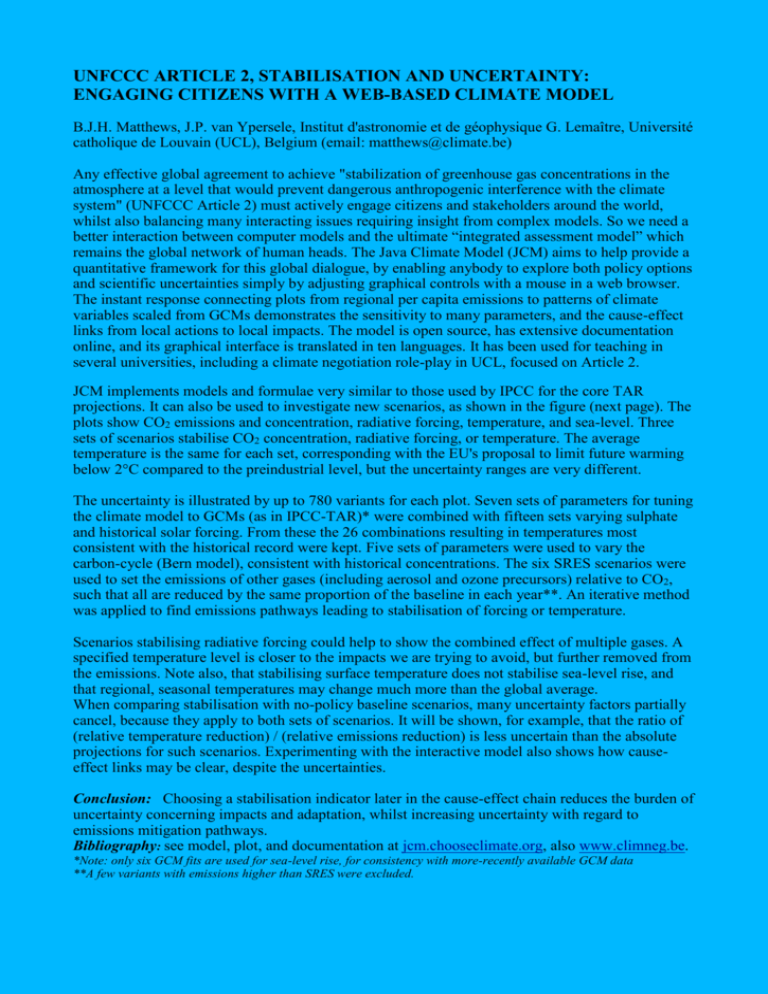
UNFCCC ARTICLE 2, STABILISATION AND UNCERTAINTY: ENGAGING CITIZENS WITH A WEB-BASED CLIMATE MODEL B.J.H. Matthews, J.P. van Ypersele, Institut d'astronomie et de géophysique G. Lemaître, Université catholique de Louvain (UCL), Belgium (email: matthews@climate.be) Any effective global agreement to achieve "stabilization of greenhouse gas concentrations in the atmosphere at a level that would prevent dangerous anthropogenic interference with the climate system" (UNFCCC Article 2) must actively engage citizens and stakeholders around the world, whilst also balancing many interacting issues requiring insight from complex models. So we need a better interaction between computer models and the ultimate “integrated assessment model” which remains the global network of human heads. The Java Climate Model (JCM) aims to help provide a quantitative framework for this global dialogue, by enabling anybody to explore both policy options and scientific uncertainties simply by adjusting graphical controls with a mouse in a web browser. The instant response connecting plots from regional per capita emissions to patterns of climate variables scaled from GCMs demonstrates the sensitivity to many parameters, and the cause-effect links from local actions to local impacts. The model is open source, has extensive documentation online, and its graphical interface is translated in ten languages. It has been used for teaching in several universities, including a climate negotiation role-play in UCL, focused on Article 2. JCM implements models and formulae very similar to those used by IPCC for the core TAR projections. It can also be used to investigate new scenarios, as shown in the figure (next page). The plots show CO2 emissions and concentration, radiative forcing, temperature, and sea-level. Three sets of scenarios stabilise CO2 concentration, radiative forcing, or temperature. The average temperature is the same for each set, corresponding with the EU's proposal to limit future warming below 2°C compared to the preindustrial level, but the uncertainty ranges are very different. The uncertainty is illustrated by up to 780 variants for each plot. Seven sets of parameters for tuning the climate model to GCMs (as in IPCC-TAR)* were combined with fifteen sets varying sulphate and historical solar forcing. From these the 26 combinations resulting in temperatures most consistent with the historical record were kept. Five sets of parameters were used to vary the carbon-cycle (Bern model), consistent with historical concentrations. The six SRES scenarios were used to set the emissions of other gases (including aerosol and ozone precursors) relative to CO2, such that all are reduced by the same proportion of the baseline in each year**. An iterative method was applied to find emissions pathways leading to stabilisation of forcing or temperature. Scenarios stabilising radiative forcing could help to show the combined effect of multiple gases. A specified temperature level is closer to the impacts we are trying to avoid, but further removed from the emissions. Note also, that stabilising surface temperature does not stabilise sea-level rise, and that regional, seasonal temperatures may change much more than the global average. When comparing stabilisation with no-policy baseline scenarios, many uncertainty factors partially cancel, because they apply to both sets of scenarios. It will be shown, for example, that the ratio of (relative temperature reduction) / (relative emissions reduction) is less uncertain than the absolute projections for such scenarios. Experimenting with the interactive model also shows how causeeffect links may be clear, despite the uncertainties. Conclusion: Choosing a stabilisation indicator later in the cause-effect chain reduces the burden of uncertainty concerning impacts and adaptation, whilst increasing uncertainty with regard to emissions mitigation pathways. Bibliography: see model, plot, and documentation at jcm.chooseclimate.org, also www.climneg.be. *Note: only six GCM fits are used for sea-level rise, for consistency with more-recently available GCM data **A few variants with emissions higher than SRES were excluded. The plots show (from top to bottom) CO2 emissions (GtC, including land use change), CO2 Concentration (ppm), Radiative Forcing (Wm-2, total including all gases, aerosols, and natural forcing), Temperature (°C), and Sea-level rise (m). Three sets of scenarios (from left to right) stabilise CO2 Concentration at 475ppm, Radiative Forcing at 3.4 Wm-2, and Temperature at 2°C above preindustrial (the EU's proposed limit for future warming). The average temperature is the same for each set, but the uncertainty ranges, shown by up to 780 variants, are very different. Note that the distributions are skewed, for example, on the ST-Emissions plot, most of the curves are below the middle of the range (the mean in 2100 is at 3.2 GtC, with σ= 1.9).






